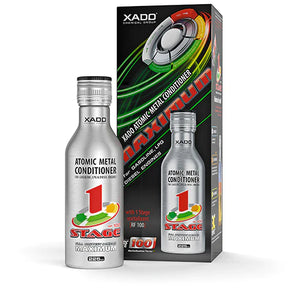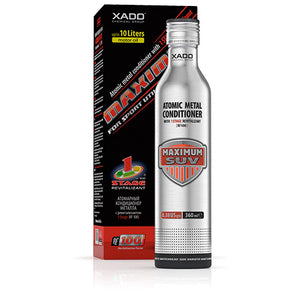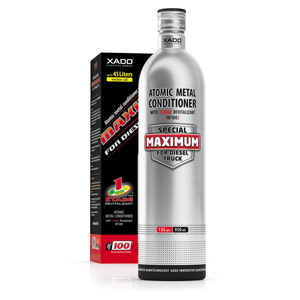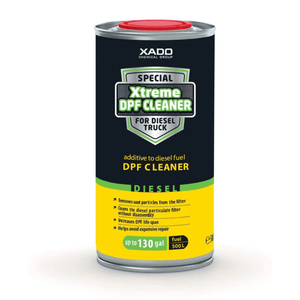Increased Oil Consumption and Bluish Exhaust Smoke
When a vehicle starts belching bluish or gray exhaust smoke in thick clouds—reminiscent of an old-fashioned steam locomotive—it’s a telltale sign that oil is leaking into the combustion chamber and burning alongside the fuel. This problem can be serious, as the density of the smoke directly reflects the severity of the wear or damage inside the engine. You’ll often notice a distinctive odor that’s similar to a two-stroke engine’s exhaust. Below, we’ll explore exactly how oil sneaks into the cylinders and what you can do to fix—and even prevent—this issue.

1. Valve Stem Seal Wear
One of the most common ways oil ends up in the combustion chamber is through worn or hardened valve stem seals. These seals are designed to prevent oil in the valvetrain from leaking past the valve stems and into the cylinders. But when they lose their elasticity:
-
Overnight Oil Seepage: After the engine is turned off for a long period (e.g., overnight), oil can seep through the compromised seals and pool in the cylinders.
-
Thick Startup Smoke: Upon starting the engine, that pooled oil instantly burns off, creating a heavy puff of bluish smoke.
-
Diminished Smoke After Warm-Up: Once the initial oil is burned, the smoke level typically drops because only a small amount of additional oil seeps past worn seals during normal operation.
Exception: If the valve guides themselves are excessively worn, larger quantities of oil can flow into the cylinders, causing continuous smoking rather than just a brief burst at startup.

How to Fix Valve Stem Seal Problems:
-
Restore Seal Elasticity: Add ATOMEX Stop Leak Engine to your oil. Its special components help rejuvenate hardened valve stem seals and reduce oil migration into the cylinders.
-
Boost Oil Viscosity: Follow up with ATOMEX Complex Oil Treatment, which thickens the oil slightly, improving its sealing properties around worn areas in the valve stem seals and piston group.
-
Part Replacement: If valve guides are severely worn, no additive will stop significant oil consumption; you’ll need to replace those components.
2. Worn Cylinder-Piston Group
Another key suspect is wear or damage in the cylinder-piston group, especially around the oil control rings. Normally, these rings remove excess oil from cylinder walls so the combustion chamber remains lubricated but not flooded. Over time, however, they can wear down or get stuck due to:
-
Sludge and Carbon Deposits from dirty oil or irregular oil changes.
-
Overheating the Engine, which bakes oil residues onto piston grooves.
-
Frequent Cold Starts that leave moisture and raw fuel in the oil, promoting sludge.
-
Long Periods of Inactivity, allowing oil to gum up in piston ring grooves.
When oil control rings no longer move freely, they fail to scrape away oil properly, letting that oil burn during combustion. The result is bluish smoke, increased oil consumption, harder starting, and sometimes higher fuel usage.
Decarbonizing and Restoring Ring Mobility
Here’s the good news: you don’t always need a complete teardown to free stuck rings. Decarbonizing agents—chemical products formulated to soften and dissolve hardened varnishes—can work wonders:
These products penetrate deposits, restoring ring mobility. Decarbonize regularly and flush the oil system at every oil change to help prevent future ring sticking. A clean engine is far less likely to suffer from oil burning and ring-related compression loss.
What If Rings Are Already Critically Worn?
If you’ve driven for too long with stuck rings, they can wear unevenly—so even after decarbonizing, excessive oil consumption might persist. That typically signals ring replacement is the only real fix.

Restoring Worn Cylinder Walls with XADO REVITALIZANT®
When piston rings and cylinder walls wear down, compression drops and oil can slip past the gap. Severe wear often requires an engine overhaul. However, XADO REVITALIZANT® technology can sometimes repair moderate wear without disassembly. REVITALIZANT® forms a new metal-ceramic coating on friction surfaces, optimizing clearances and reducing oil consumption. Top choices:
-
XADO REVITALIZANT® EX120 for Gasoline/Diesel Engines
These products gradually rebuild worn surfaces, improving both engine compression and reliability.
3. Malfunction of the High-Pressure Fuel Pump (HPFP)
In many diesel vehicles, an inline HPFP is lubricated by engine oil. Over time, the plunger pair may wear, creating a pathway for oil to seep into the pump’s working chamber, mix with diesel fuel, and burn in the cylinders. This scenario is tougher to spot because most owners don’t expect the fuel pump to be an oil “leak” point.
Signs and Solutions:
-
Unexplained Oil Loss: If all other typical causes are ruled out, the HPFP may be the culprit.
-
Rebuilding HPFP with XADO: Using a REVITALIZANT®-based product can restore the precise geometry of the pump’s plunger pair, eliminating oil leakage. You won’t need to remove the pump or take the vehicle out of service for long.
-
Recommended Products:
For best results, clean the fuel system before treatment with XADO Multi Cleaner (Diesel).
4. Excess Crankcase Pressure
A clogged or malfunctioning crankcase ventilation system can boost pressure inside the engine’s crankcase. Alternatively, significant wear in the cylinder-piston group can let exhaust gases blow by the rings into the crankcase, further raising pressure. When crankcase pressure climbs too high, oil is forced through seals and gaps into the intake manifold, where it ultimately burns, creating bluish smoke.
-
Common Culprits:
-
Blocked Ventilation Passages: Deposits or sludge in the PCV (Positive Crankcase Ventilation) system.
-
Overfilled Oil: Excess motor oil can aerosolize under high RPM, getting pulled into the combustion chamber.
-
Worn Seals Under Pressure: Valve stem seals are particularly susceptible to leaking when exposed to higher crankcase pressures.
-
Solutions:
-
Mechanical Cleaning: Remove and manually clean the crankcase ventilation components.
-
Chemical Cleaning: Use oil system cleaners that boost detergent properties in the oil.
-
Regular System Flush: Employ products like XADO Total Flush Oil System Cleaner at every oil change. This helps prevent deposits from forming in oil channels, reduces sludge accumulation, and preserves the integrity of the crankcase ventilation system.
5. Turbocharger Oil Leaks (If Equipped)
In turbocharged engines, the turbo bearings and seals can degrade, allowing engine oil to seep into the compressor or turbine side. When that oil contacts the hot exhaust stream or intake air, it burns and forms bluish smoke. Because turbo seals endure extreme temperatures and rotational speeds, they’re prone to wear if oil quality is neglected or if the turbo is subjected to harsh operating conditions.
-
Warning Signs: Whining or chirping sounds, reduced boost pressure, and noticeable oil residue in the intercooler or intake piping.
-
Further Reading: For more detailed information on diagnosing worn turbo bearings, check out the article “Oil Consumption Through the Turbine.”
6. Poor Repairs or Defective Parts
Sometimes, the simplest explanation is that a previous engine repair was not completed correctly or used substandard parts. If pistons, rings, or seals are installed improperly—or if the dimensions of replacement parts don’t match factory specs—engine oil consumption can skyrocket. Always check workmanship and verify the quality of any newly installed components.
Keep Your Engine Healthy and Smoke-Free
Excessive oil consumption isn’t just a nuisance; it can foreshadow serious engine trouble. Fortunately, most of these issues—from stuck rings to leaky valve stem seals—can be corrected, often without a complete teardown. XADO’s advanced REVITALIZANT® technology and specialized additives are proven to:
-
Restore Worn Metal Surfaces in the cylinder-piston group, HPFP, and other components.
-
Improve Engine Sealing by refining metal microstructure and optimizing clearances.
-
Reduce Oil Burning for a cleaner, longer-lasting engine.
Routine maintenance—like frequent oil changes, regular oil system flushes, and timely part inspections—also goes a long way in preventing the conditions that cause excessive oil consumption.
By systematically pinpointing the exact cause—be it worn valve stem seals, stuck piston rings, turbo seal failure, or HPFP issues—and applying the right fix, you can banish that bluish smoke for good. With XADO’s lineup of REVITALIZANT®-based formulas, you can often avoid major repairs and keep your engine running smoothly, efficiently, and reliably for the long haul.




